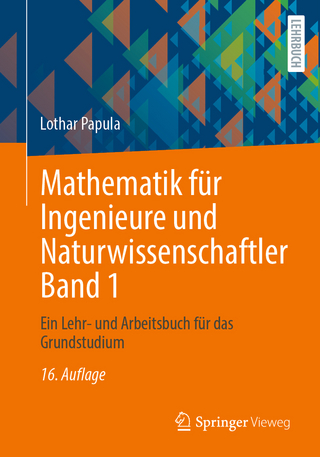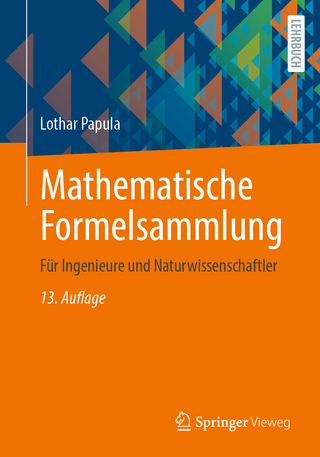
Satellite Formation Flying
Springer Verlag, Singapore
978-981-15-9630-8 (ISBN)
Dr. Mathavaraj S is a space scientist working at the Indian Space Research Organization (ISRO). He earned his Bachelor of Engineering in Aeronautical Engineering from Hindustan College of Engineering, Padur, followed by Master of Technology in Aerospace Engineering from Indian Institute of Technology, Madras and Ph.D. in Aerospace Engineering from Indian Institute of Science, Bengaluru. His interest in space dynamics made him pursue his career in Flight Dynamics Group at U. R. Rao Satellite Center (URSC) of ISRO. His contributions at ISRO include maneuver strategy design for geostationary orbit and lunar capture orbits, attitude profile generation during engine firing and constrained trajectory optimization for soft lunar landing. He is also passionate about formation flying of satellites. For his contribution in the space field, he received ISRO's Young Scientist award in 2018. Dr. Radhakant Padhi is currently working as a Professor in the Department of Aerospace Engineering and also in the Center for Cyber Physical Systems, Indian Institute of Science (IISc), Bangalore. He earned his Masters and Ph.D. in Aerospace Engineering from IISc Bangalore and Missouri University of Science and Technology, USA respectively. Dr. Padhi is a Fellow of Indian National Academy of Engineers, a Fellow of Institution of Engineers (India) and a Fellow of Institution of Electronics and Telecommunication Engineers. He is an Associate Fellow of American Institute of Aeronautics and Astronautics (AIAA), a Senior Member of Institute of Electrical and Electronics Engineers (IEEE). He is a Vice Chair of the Publication Board of the International Federation of Automatic Control (IFAC) and has been a member of its Council during 2014-2020. He is a life member of Aeronautical Society of India, Systems Society of India and Soft Computing Research Society. Dr. Padhi's research interest lies in synthesis of algorithms in optimal and nonlinear control as well as state estimation. He works on diverse application areas such as control and guidance of aerospace vehicles, biomedical systems, mechanical systems, distributed parameter systems, and industrial process control. He has over 250 publications in international journals and conferences. His research is well-supported by Ministry of Human Resource Development, Government of India, Defence Research Development Organisation of India, Indian Space Research Organisation, Air Force Research Lab of USA, Agency for Defence Development of South Korea, etc.
Chapter 1: Introduction and Motivation .- Chapter 2: Satellite Orbital Dynamics.- Chapter 3: Infinite-time LQR and SDRE for Satellite Formation Flying.- Chapter4: Adaptive LQR for Satellite Formation Flying.- Chapter 5: Adaptive Dynamic Inversion for Satellite Formation Flying.- Chapter 6: Finite-time LQR and SDRE for Satellite Formation Flying.- Chapter 7: Model Predictive Static Programming.- Chapter 8: Performance Comparison.
“The book in my opinion, will be very useful for students studying the control of artificial space bodies and specialists in this field. The presentation of the material is arranged in such a way that readers will have enough basic training in mathematics and mechanics of the first courses of universities. In addition, certain sections of the book are of independent interest for study.” (Oleg Cherkasov, zbMATH 1498.70036, 2022)
| Erscheinungsdatum | 19.03.2021 |
|---|---|
| Zusatzinfo | 88 Illustrations, color; 8 Illustrations, black and white; XXI, 154 p. 96 illus., 88 illus. in color. |
| Verlagsort | Singapore |
| Sprache | englisch |
| Maße | 178 x 254 mm |
| Themenwelt | Mathematik / Informatik ► Mathematik ► Angewandte Mathematik |
| Mathematik / Informatik ► Mathematik ► Finanz- / Wirtschaftsmathematik | |
| Technik ► Fahrzeugbau / Schiffbau | |
| Technik ► Luft- / Raumfahrttechnik | |
| Technik ► Maschinenbau | |
| Schlagworte | Linear Quadratic Regulator • Neuro-Adaptive Control • Nonlinear Control • optimal control • Satellite Formation Flying |
| ISBN-10 | 981-15-9630-1 / 9811596301 |
| ISBN-13 | 978-981-15-9630-8 / 9789811596308 |
| Zustand | Neuware |
| Informationen gemäß Produktsicherheitsverordnung (GPSR) | |
| Haben Sie eine Frage zum Produkt? |
aus dem Bereich


